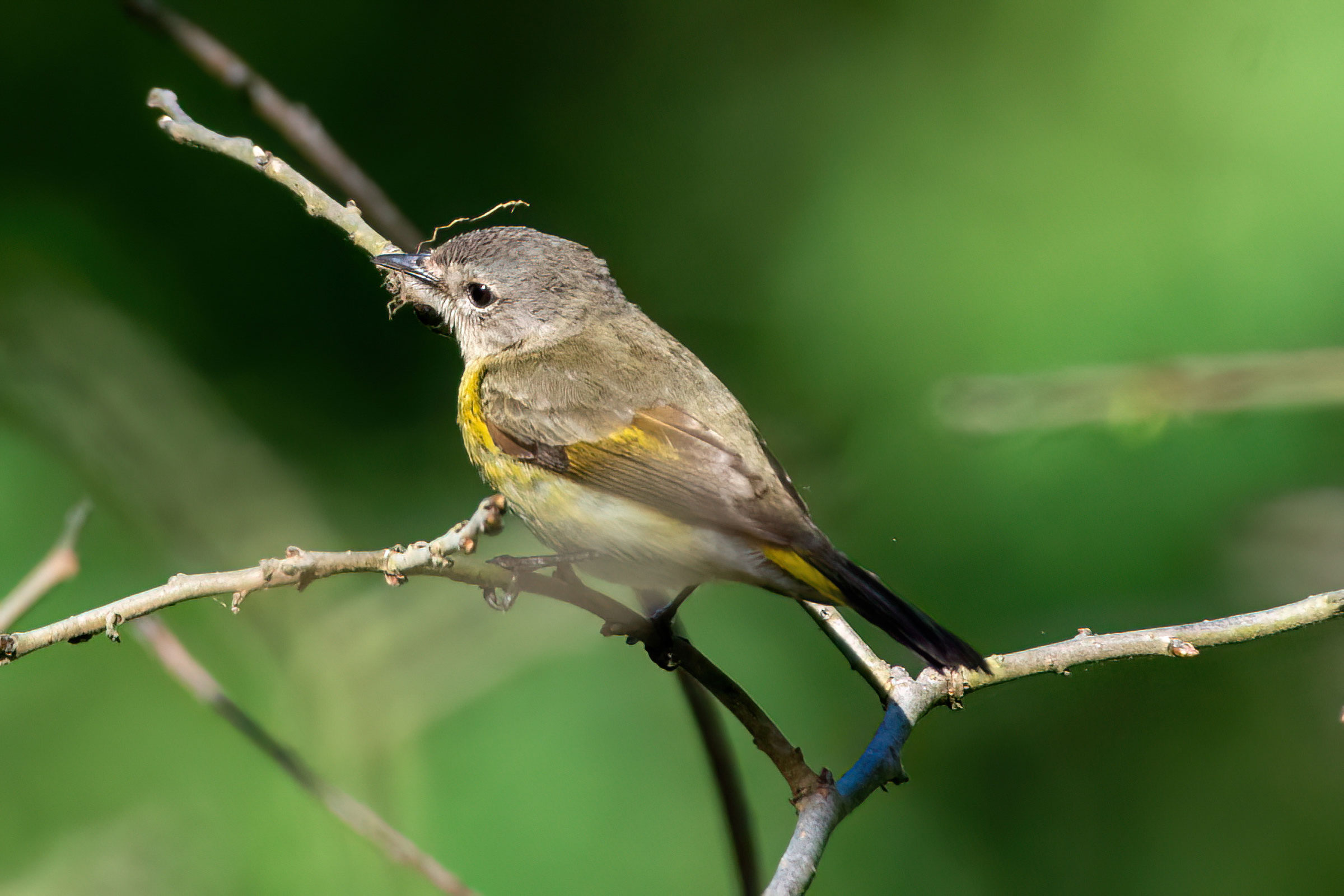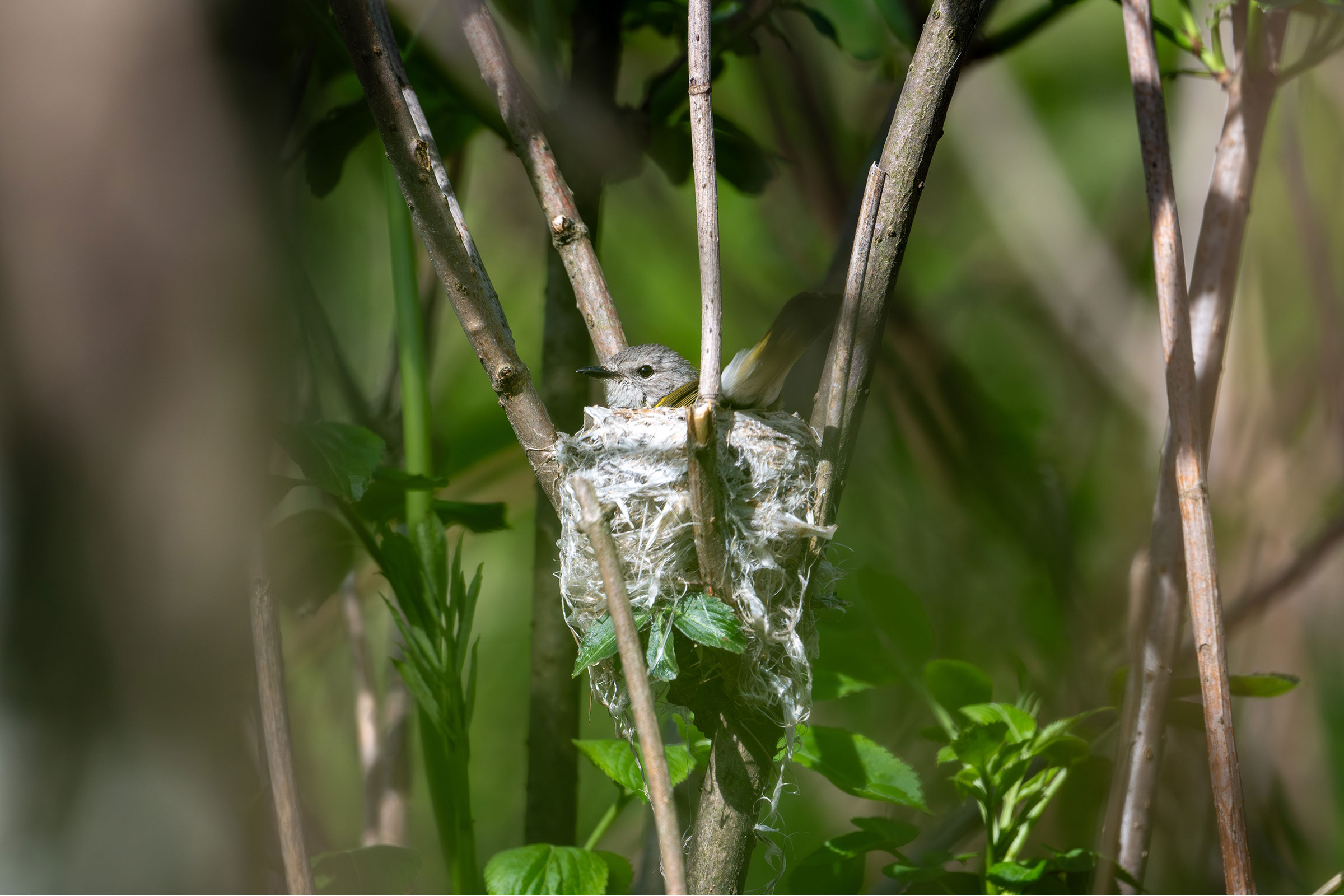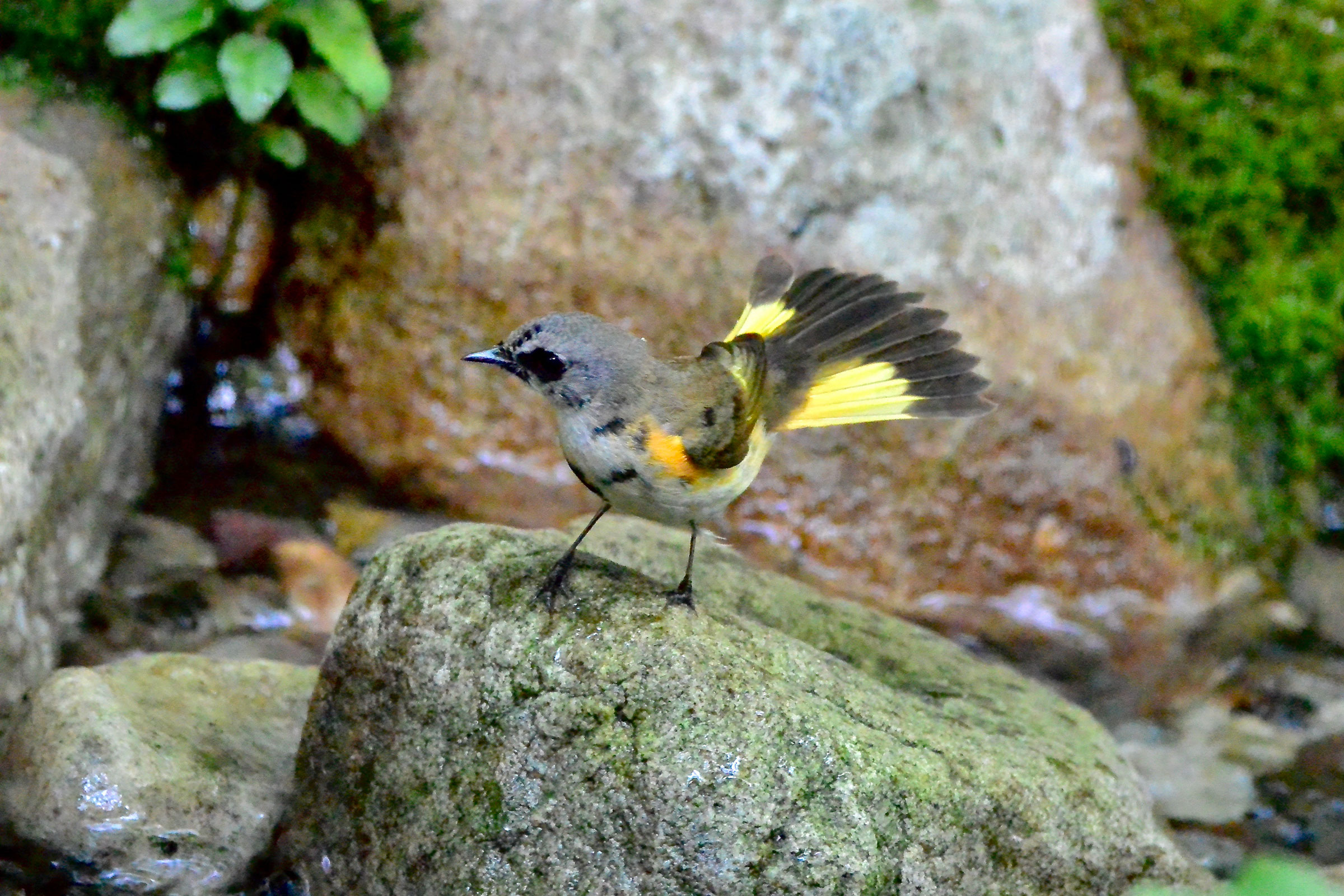Introduction
The American Redstart’s bright orange wing and tail patches (yellow in the case of females and immature males) are not only used to attract mates. They also use their colorful plumage in a way that seems to surprise prey, such as flies, moths, and leafhoppers, resulting in their dispersal out of foliage. Throughout Appalachia, these little birds are often known as “lantern” birds for the fiery flickers of orange, as they flutter their wings in pursuit of prey. American Redstarts nest in rich, moist, middle-aged forest often with a dense understory of shrubs and saplings (Sherry et al. 2020). Their distinctive tsee-tsee-tsee-tsee-tzirr song has a well-known buzzy, slurred ending that haunts the western forests of Virginia in the spring and summertime.
Breeding Distribution
American Redstarts occur throughout the state but are more likely to occur at mid- to high-elevation in geographically contiguous forests of Virginia’s western Mountains and Valleys region (Figure 1). They are unlikely to be found in areas with a high diversity of habitat types or in young forest, preferring later successional stages for breeding territories. Outside of the western part of the Commonwealth, occurrence is generally low, patchily distributed, and dependent on the availability of appropriate forest habitat.
Between the First and Second Atlases (Figures 1 and 2), the American Redstart’s likelihood of occurrence decreased throughout much of the state, with no areas of increase (Figure 3). However, this species remained stable in the extensively forested sections of the Mountains and Valleys region. The decline is likely attributable to the loss of appropriate middle-aged forest with adequate shrub and sapling structure in the understory.
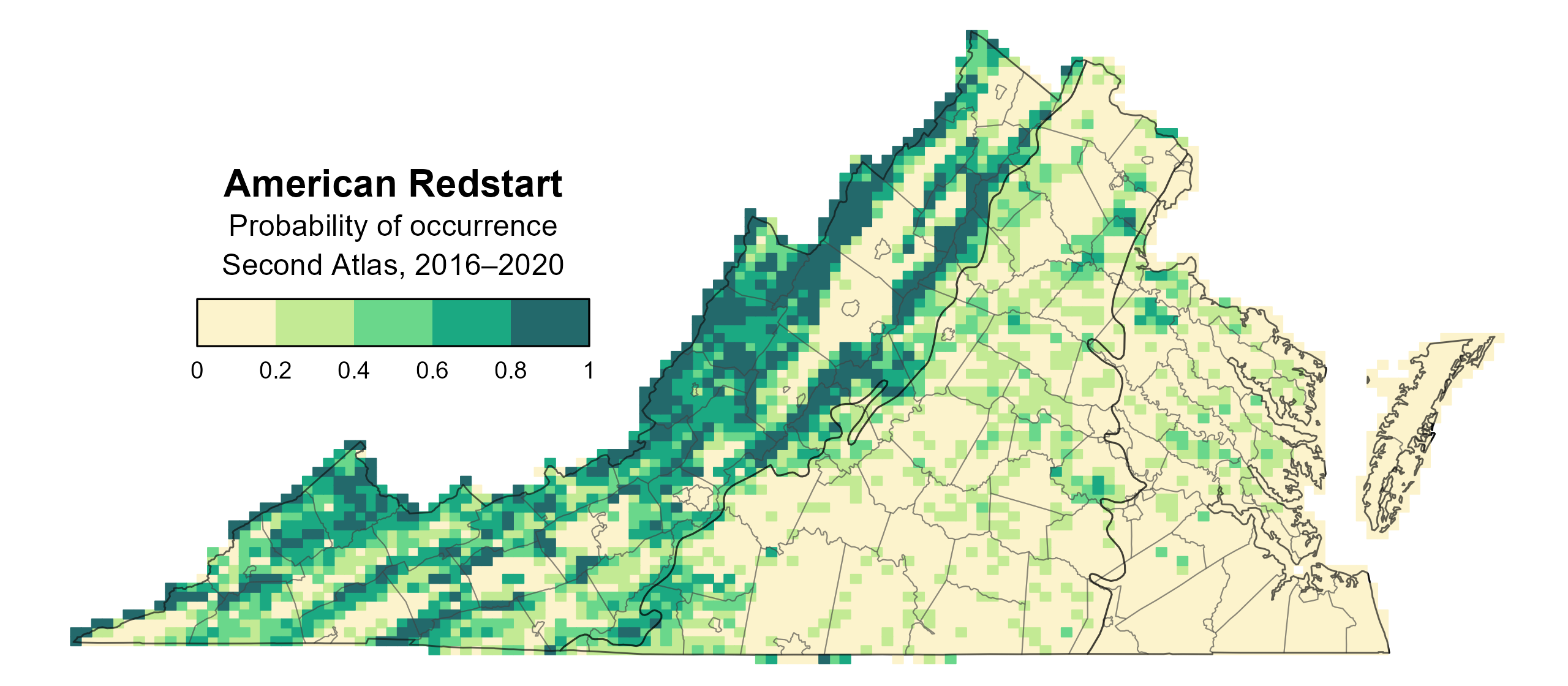
Figure 1: American Redstart breeding distribution based on probability of occurrence (Second Atlas, 2016–2020). This map indicates the probability that this species will occur in an Atlas block (an approximately 10 mi2 [26 km2] survey unit) based on environmental (including habitat) factors and after adjusting for the probability of detection (variation in survey effort among blocks).

Figure 2: American Redstart breeding distribution based on probability of occurrence (First Atlas, 1985–1989). This map indicates the probability that this species will occur in an Atlas block (an approximately 10 mi2 [26 km2] survey unit) based on environmental (including habitat) factors and after adjusting for the probability of detection (variation in survey effort among blocks). Blocks in white were not surveyed during the First Atlas and were not modeled.

Figure 3: American Redstart change in breeding distribution between Atlases (1985–1989 and 2016–2020) based on probability of occurrence. This map indicates the change in the probability that this species will occur in a block (an approximately 10 mi2 [26 km2] survey unit) between Atlas periods. Blocks with no change (tan) may have constant presence or constant absence. Blocks in white were not surveyed during the First Atlas and were not modeled.
Breeding Evidence
American Redstarts were confirmed in 129 blocks and 47 counties and found to be probable breeders in 14 additional counties (Figure 4). Most detections came from forested areas in the Mountains and Valleys region, with only limited detections in the remainder of the state, marking a notable change from the First Atlas (Figure 5).
The earliest breeding observations were recorded in early May when volunteers observed adults building nests on May 2 (Figure 6). However, Redstarts tend to build nests in the mid to upper canopy, making them difficult to observe. As a result, most breeding confirmations relied on observations of adults carrying food (May 14 – July 28), recently fledged young (June 4 – August 7), and adults feeding young (June 8 – July 28) (Figure 6).
For more general information on the breeding habits of this species, please refer to All About Birds.
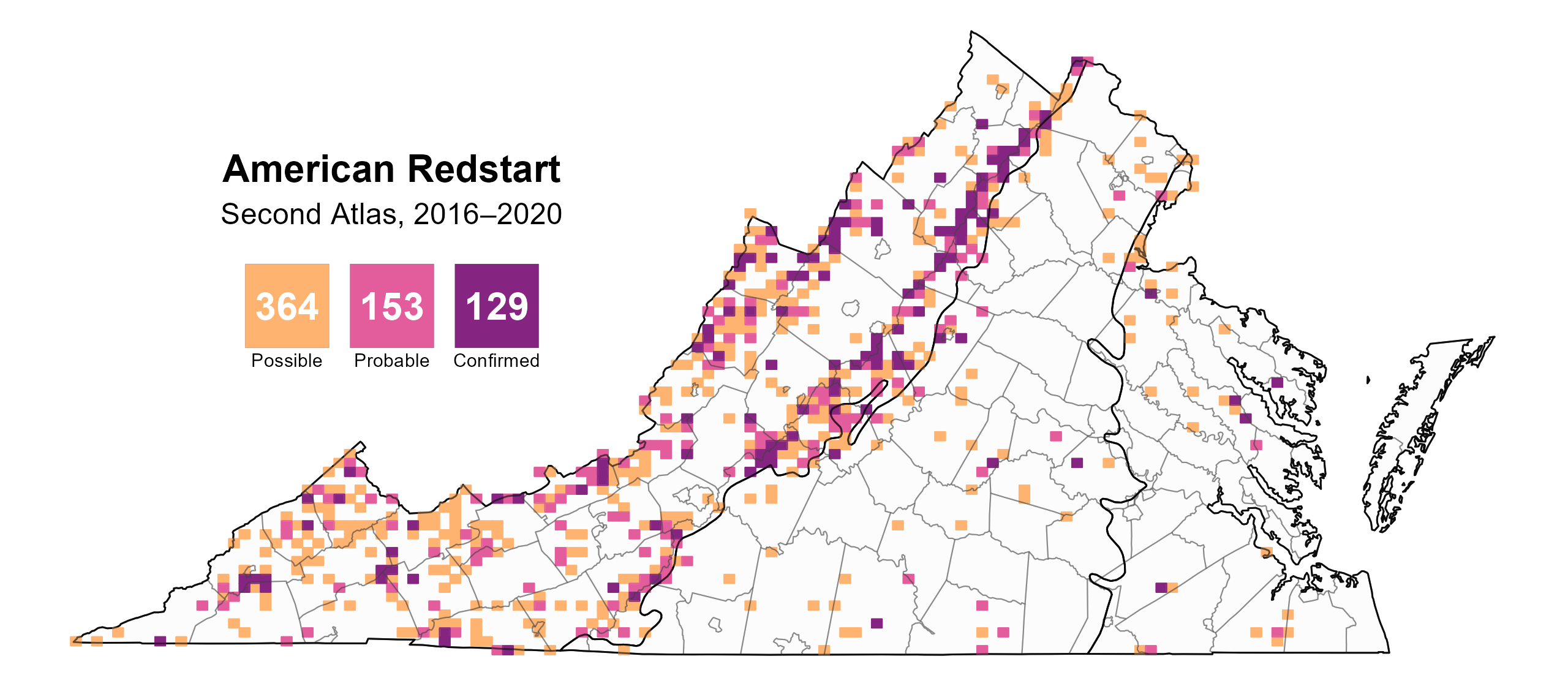
Figure 4: American Redstart breeding observations from the Second Atlas (2016–2020). The colored boxes illustrate Atlas blocks (approximately 10 mi2 [26 km2] survey units) where the species was detected. The colors show the highest breeding category recorded in a block. The numbers within the colors in the legend correspond to the number of blocks with that breeding evidence category.
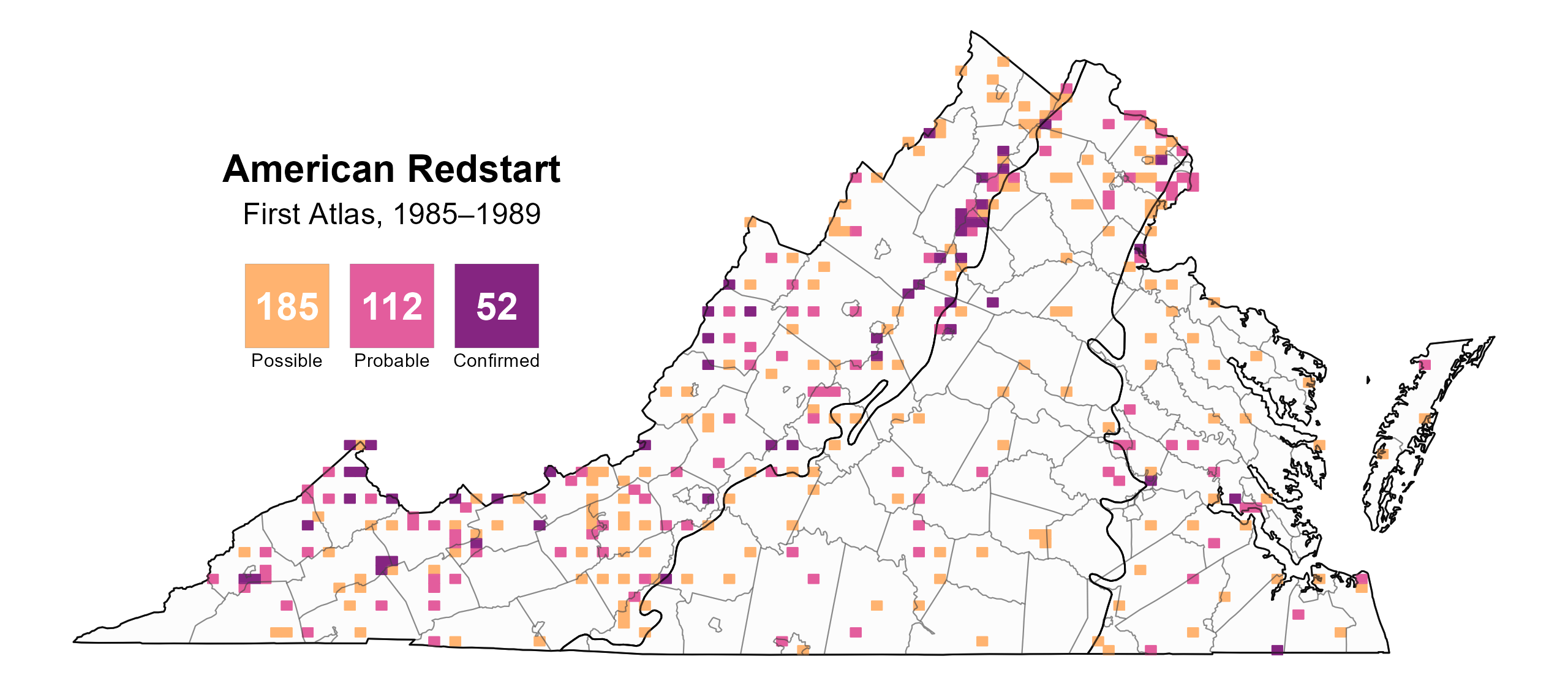
Figure 5: American Redstart breeding observations from the First Atlas (1985–1989). The colored boxes illustrate Atlas blocks (approximately 10 mi2 [26 km2] survey units) where the species was detected. The colors show the highest breeding category recorded in a block. The numbers within the colors in the legend correspond to the number of blocks with that breeding evidence category.

Figure 6: American Redstart phenology: confirmed breeding codes. This graph shows a timeline of confirmed breeding behaviors. Tick marks represent individual observations of the behavior.
Population Status
The estimated relative abundance of the American Redstart was highest in forested areas of the Mountains and Valleys region with overall lower abundance elsewhere (Figure 7), suggesting that availability of suitable habitat is the key ecological driver for redstart breeding populations.
The total estimated American Redstart population in the state is approximately 182,000 individuals (with a range between 134,000 and 248,000). Based on the North American Breeding Bird Survey (BBS) for the Atlantic Flyway region, as credible data were not available for Virginia, the American Redstart population decreased by a nonsignificant 0.18% annually from 1966–2022 in the region, and between Atlases, American Redstarts decreased by a nonsignificant 0.32% per year from 1987–2018 (Hostetler et al. 2023; Figure 8).
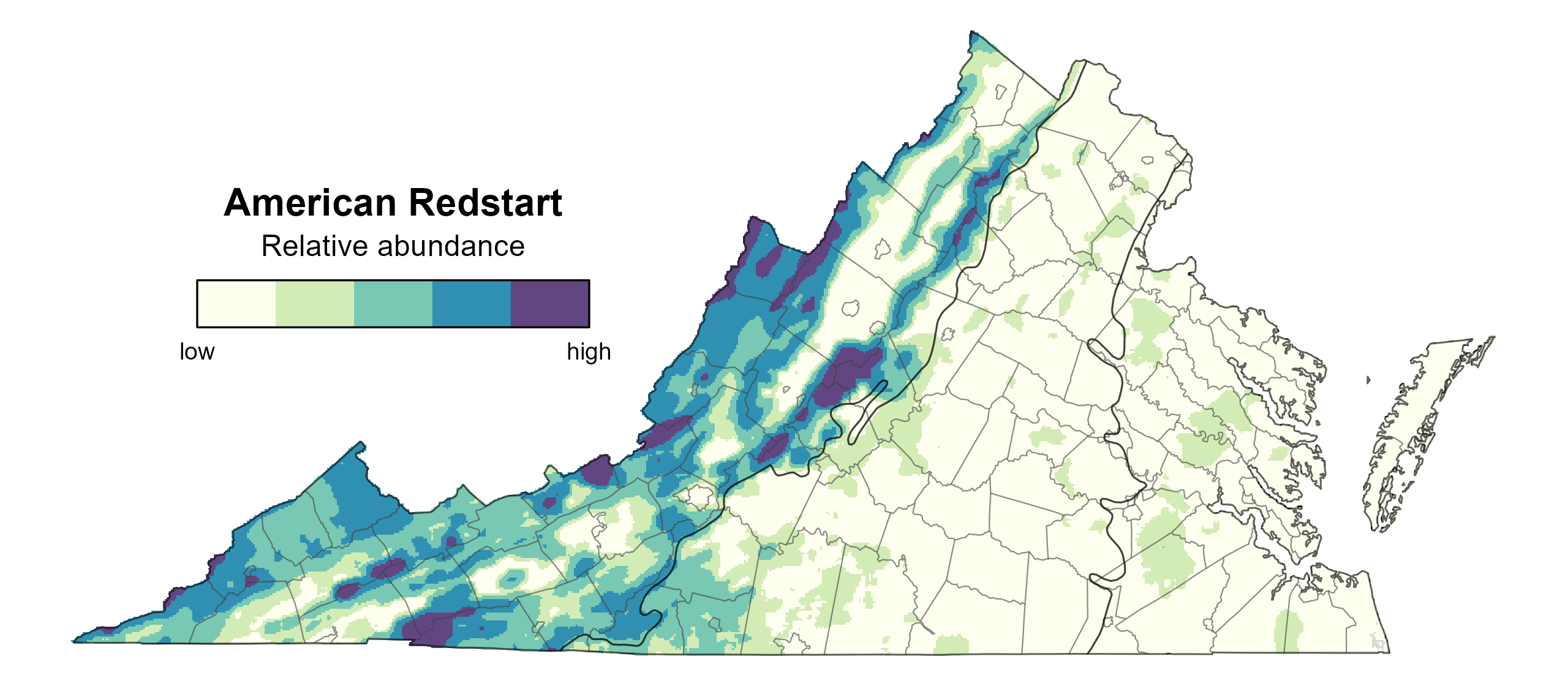
Figure 7: American Redstart relative abundance (Second Atlas, 2016–2020). This map indicates the predicted abundance of this species at a 0.4 mi2 (1 km2) scale based on environmental (including habitat) factors. Abundance values are presented on a relative scale of low to high.
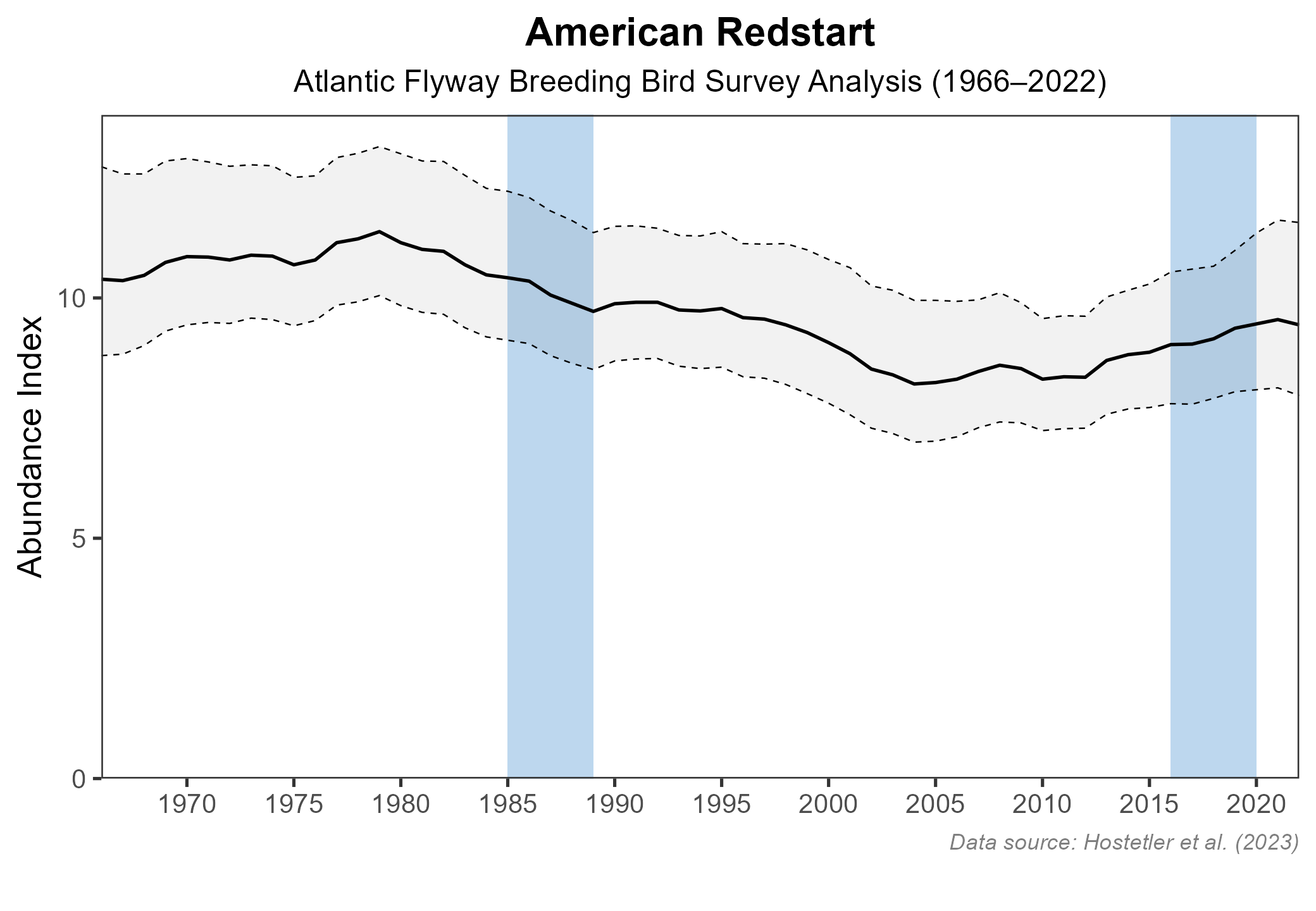
Figure 8: American Redstart population trend for the Atlantic Flyway as estimated by the North American Breeding Bird Survey. The vertical axis shows species abundance; the horizontal axis shows the year. The solid line indicates the estimated population trend; there is a 97.5% probability that the true population trend falls between the dashed lines. The shaded bars indicate the First and Second Atlas periods.
Conservation
American Redstarts are common and widespread throughout their range. They are not considered a species of special concern, and no specific conservation projects are underway in Virginia. However, our modeling results indicate that availability of suitable forest habitat, particularly large contiguous tracks, is vital for maintaining redstart populations in the Commonwealth and should help to inform future conservation and land management practices.
Interactive Map
The interactive map contains up to six Atlas layers (probability of occurrence for the First and Second Atlases, change in probability of occurrence between Atlases, breeding evidence for the First and Second Atlases, and abundance for the Second Atlas) that can be viewed one at a time. To view an Atlas map layer, mouse over the layer box in the upper left. County lines and physiographic regional boundaries (Mountains and Valleys, Piedmont, and Coastal Plain) can be turned on and off by checking or unchecking the box below the layer box. Within the map window, users can hover on a block to see its value for each layer and pan and zoom to see roads, towns, and other features of interest that are visible beneath a selected layer.
View Interactive Map in Full Screen
References
Hostetler, J. A., J. R. Sauer, J. E. Hines, D. Ziolkowski, and M. Lutmerding (2023). The North American breeding bird survey, analysis results 1966–2022. U.S. Geological Survey, Laurel, MD, USA. https://doi.org/10.5066/P9SC7T11.
Sherry, T. W., R. T. Holmes, P. Pyle, and M. A. Patten (2020). American Redstart (Setophaga ruticilla), version 1.0. In Birds of the World (P. G. Rodewald, Editor). Cornell Lab of Ornithology, Ithaca, NY, USA. https://doi.org/10.2173/bow.amered.01.



